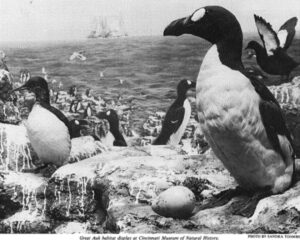The rainforest at night offers a symphony of sound — a thousand unseen creatures moving, mating and preying in the darkness.
“When we turn on our flashlights, there is life all around us.”
That’s how Lucas Fiat describes the work of Project Mantis, which has spent the last several years documenting the beautiful and enigmatic animals of the Amazon after sunset.
Fiat and Leo Lanna — an artist and scientist from Brazil — have developed a passion for documenting the rainforest’s nocturnal environment. The duo’s gorgeous and prolific images of nighttime insects have captivated the world, landing them partnerships with National Geographic and a 2022 TED Talk.
They have an infectious enthusiasm for this work, focusing on their favorite: the praying mantis. The majority of mantis species, about 10 percent, can be found in Brazil. (Across the globe, scientists have identified 2,500 species so far.)

Project Mantis has photographed mantises, spiders, snakes, frogs, and many other creatures. Photo: Project Mantis
Fiat and Lanna have even discovered a new species during their nighttime excursions, which will soon receive its official name.
Like many researchers focused on wildlife, these Brazilians see their work as an effort to document these creatures before they’re gone forever. Brazil is the most biodiverse country in the world, yet it loses a football field’s worth of rainforest every minute.
“We are documenting species that may not exist in future generations,” Lanna says. “We’re just beginning to learn about them, and we are sharing our discoveries so that we can increase their chances for survival.”
Living with mantises
Fiat and Lanna love praying mantises so much they even keep them as roommates.
The researchers have an unusual “no-kill” policy for the mantises they keep for study, living with over 40 of them. Some specimens survive up to two years, allowing the researchers to study their long-term behavior and life cycle.
It also helps them continue their research between the rainforest expeditions, which require significant planning and funding. Their last trip, called “Amazon from Dusk to Dawn,” was the third major foray into the rainforest’s nightlife. It took them deep into Brazil’s Caxiuanã National Forest in October 2021.
Project Mantis’ first expedition in Mabán took place in 2019, with funding from National Geographic. The second trip saw them venturing into Brazil’s Cristalino Private Natural Heritage Reserve — with support from Greenpeace Brazil.

When exposed to ultraviolet light, mantises and other insects “shine the light back to us”, said Lucas Fiat, Project Mantis’ creative director. Photo: Project Mantis
“We say that not visiting ecosystems at night is like closing your eyes to 50 percent of our planet’s beauties,” Fiat told MongaBay in an interview. “Few people know it, but it’s at night that the rainforest is most alive, with plenty of beings, from insects to large mammals. Colors, shapes, spectacular sounds that are rarely seen during the day.”
Many of Project Mantis’ most memorable photographs involve the use of ultraviolet light. It’s a portion of the color spectrum invisible to the naked human eye. Yet pointing ultraviolet rays at insects and plants results in a breathtaking visual change.
“They all shine it back to us in colors we could never have even dreamed of,” Fiat said. “The whole jungle reverberated in unimaginable colors! What are they trying to communicate? Which other secrets are we missing?”
With the rapid destruction of the rainforest, it’s possible scientists may not have enough time to find the answer. But looking at this organization’s incredible images makes it clear: it’s a question worth asking.
Visit Project Mantis’ website to see more of these incredible images.






